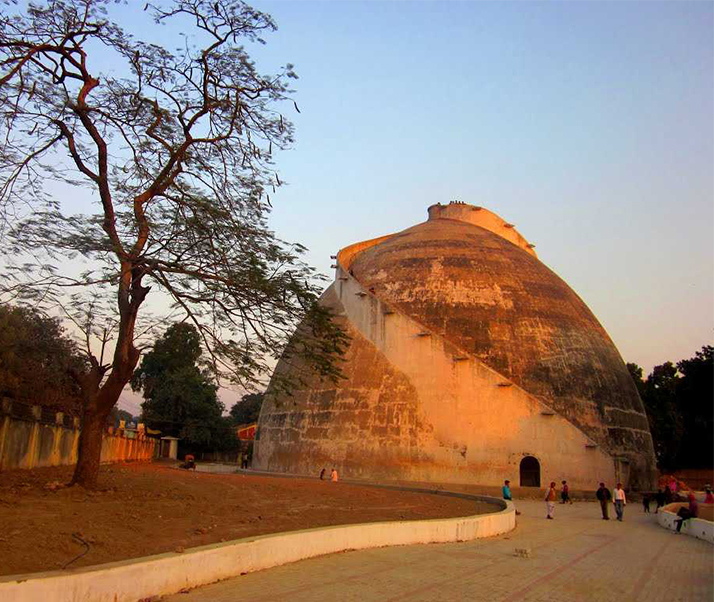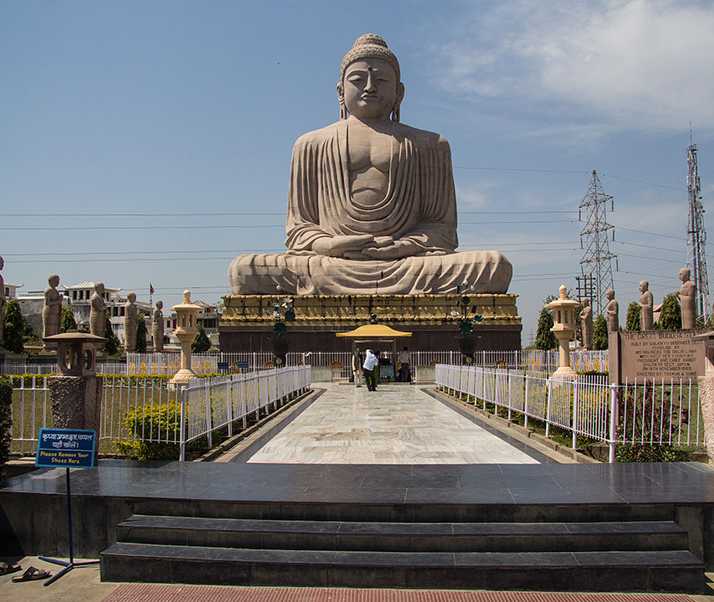+91 9884683139
talk to our Destination
specialist

Bihar’s antiquity is evident from its name, which is derived from the ancient word “Vihara” (monastery). Hindu, Buddhist, Jain, Muslim and Sikh shrines abound in this ancient land where India’s first major empires rose and fell. Where the ruins of the world’s earliest university slumbers in the void of time. The passage of Ganga, flowing wide and deep enrich the plains of Bihar before distributing in Bengal’s deltoid zone.
Bihar’s antiquity is evident from its name, which is derived from the ancient word “Vihara” (monastery). Hindu, Buddhist, Jain, Muslim and Sikh shrines abound in this ancient land where India’s first major empires rose and fell. Where the ruins of the world’s earliest university slumbers in the void of time. The passage of Ganga, flowing wide and deep enrich the plains of Bihar before distributing in Bengal’s deltoid zone.
Buddha spent 5 years at Rajgir after having attained enlightenment, and many of the remains at Rajgir commemorate various incidents related to the life of Buddha, the hill of Gridhrakuta being perhaps the most important, as this is where the Buddha delivered most of his sermons. Bodhgaya is the spot where Lord Buddha attained enlightenment, with the Mahabodhi Temple marking the precise location.
This landlocked state of Bihar is surrounded by Nepal, Bengal, Orissa, Madhya Pradesh, Uttar Pradesh and comprises four cultural regions – Bhojpur, Mithila and Magadha and Chotanagpur. Rivers Kosi and Gandak from the north and Sone from the South join the Ganga. In the fertile plains, rice, sugarcane, oilseeds, gram, maize, jute, barley and wheat are cultivated.
Bihar is the amalgamation of religion, spirituality, history and education which makes the state one of its kind.
The weather in Bihar is scorching hot in summer which lasts from March till June. The best time to visit Bihar is either after the monsoon or before summer which is during October till February.
Key Facts
Mar - Jun: Min: 24° C / Max: 42° C
Jun - Sep: Min: 31° C / Max: 35° C
Oct - Feb: Min: 8° C / Max: 14° C

The cradle of Empires!!
Prospering along the southern banks of river Ganges and set in the backdrop of a glorious historical past, Patna boasts of a dominating presence in history and enjoys the distinction of being one of the oldest cities in the world.
In addition to being one of the major and most popular tourist destinations in India, this capital city of Bihar also holds significant religious and spiritual importance as it is a gateway to pilgrimage sites of Hindus, Sikhs, Jains and Buddhists.
Originally called as Pataliputra, Patna is currently a hot-bed for the culminating political fortunes. One of the oldest continuously inhabited places in the world, it is the quintessential North Indian town - West of the city lies the area called Bankipur, while towards the southwest is the new area with wide roads and swanky buildings.
The cultural heritage of Bihar is reflected in the many monuments housed in Patna, the most famous ones being Patna Sahib Gurudwara, Patna Planetarium, the Highcourt, Golghar, Secretariat Building and Padri ki Haveli among numerous other attractions. Typical of an Indian city, the riverside city of Patna is also known for some palatable dishes - litti chokha being the king of all!

The land of Nirvana!!
Bodh Gaya is a Buddhist pilgrimage site in Gaya District of Bihar. Famous for the Mahabodhi Temple, It was here under the Bodhi tree that Gautama Buddha attained enlightenment. It is now one of the UNESCO World Heritage Sites..
and a lot of foreign countries, including Japan and China, have helped the Indian government in building facilities for the Buddhist pilgrims. The place is bustling with pilgrims all through the year from India and abroad who come to pay their homage in monasteries, temples and remnants of Bodhi Tree.
Located near the river Neranjana, Bodh Gaya was earlier known as Uruwela. It was also known as Sambodhi, Vajrasana or Mahabodhi until the 18th century CE. It is one of the four important Buddhist sites that include: Kushinagar, Lumbini and Sarnath.

The Ancient Seat of Knowledge!!
This city houses one of the world's oldest and finest residential universities which itself was an architectural masterpiece. Although in ruins, the entire complex presents a..
pretty picture and is flocked by tourists day in and day out. It has “viharas” or monasteries to the east and “chaiyas” or temples to the west. In addition to this, the complex houses a charming little museum, which has a collection of several of original Buddhist stupas, Hindu and Buddhist bronzes, coins, terracotta jars, a sample of burnt rice etc. The district is believed to be a cradle of religions. Apart from Buddhism, it is an important center for Jainism, Hinduism, and Sufism as well.
The most popular Mahavihara of the ancient times, a significant Buddhist seat of academic excellence and a modest pilgrim center, all wrapped in a wisp of spirituality, Nalanda continues to be an equally enriching location in the present. It offers vibrant substance of spirituality, history, culture, architecture, and tourism.